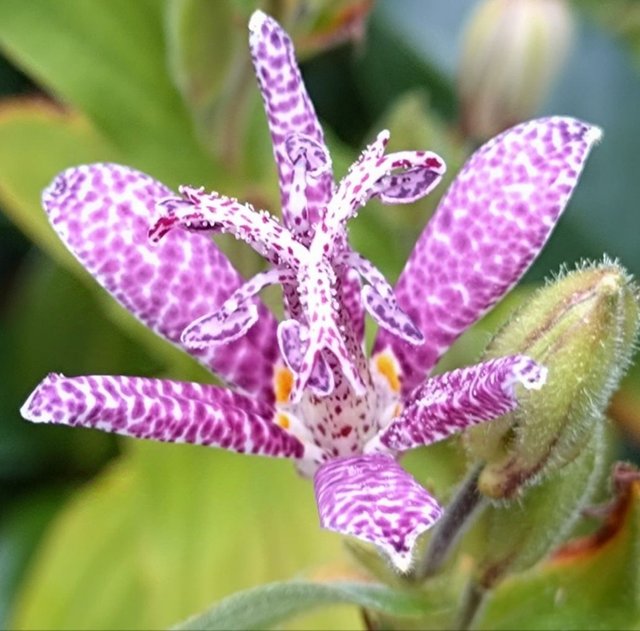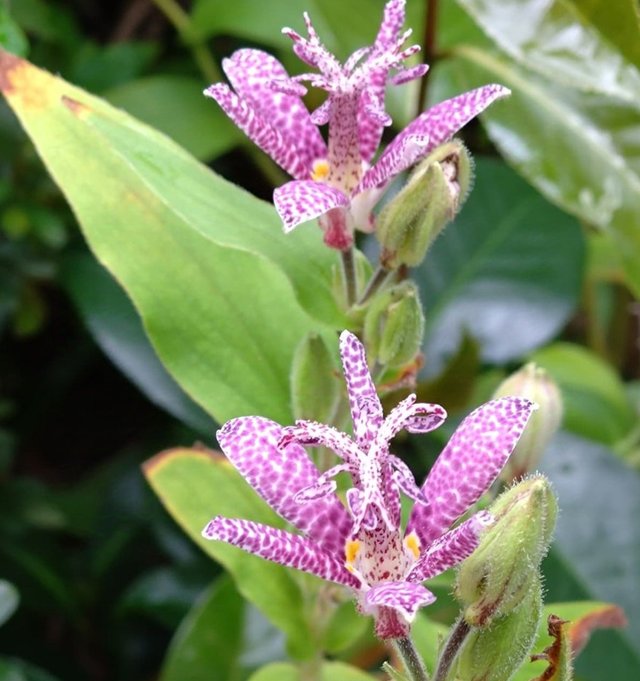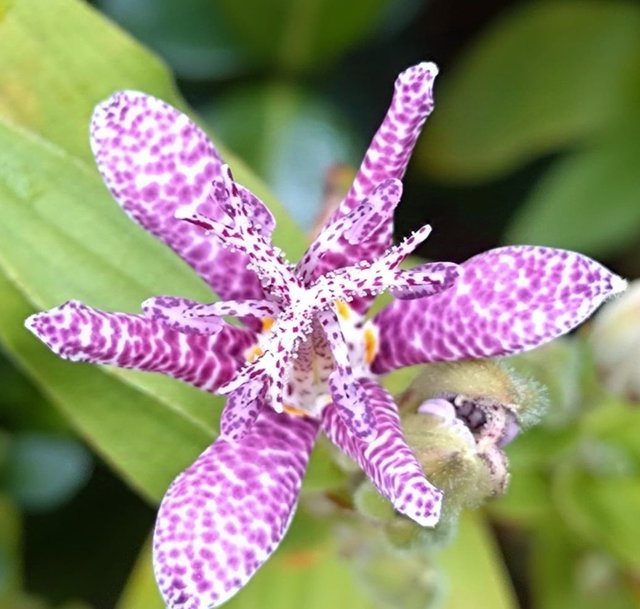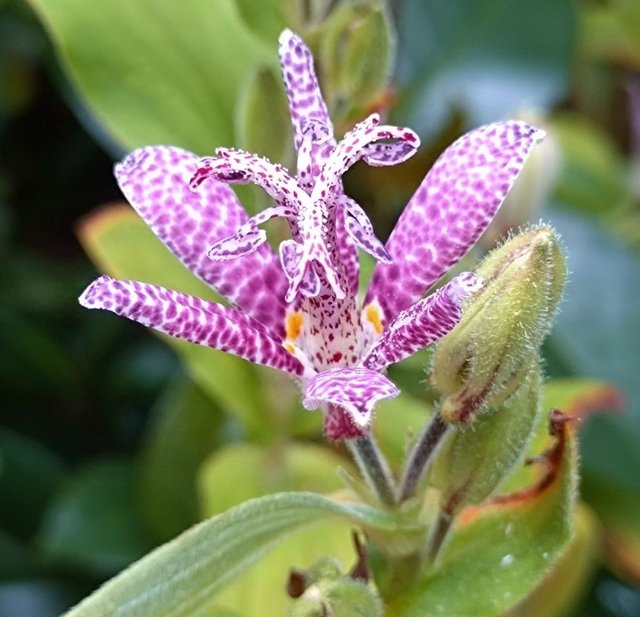The Japanese toad lily is an enchanting, delicate flowering plant that captivates garden enthusiasts with its intricate, orchid-like blossoms. Native to the shady forests of Japan, this perennial is part of the lily family and is celebrated for its ability to thrive in woodland gardens or shady borders. It blooms in late summer and fall, a time when many other plants have finished their show, making it an excellent choice for extending the beauty of a garden into autumn.
Botanical Description
Japanese toad lilies are known for their distinctive star-shaped flowers, which typically range from white to pale lavender or pink, often speckled with darker purple or maroon spots. These flowers are usually small, measuring about 1 to 1.5 inches in diameter, but their intricate detail and unique coloration give them an exotic appearance. Each flower has six petal-like tepals, which curve gracefully backward, exposing the plant's elegant stamens.
The plant itself grows to a modest height of about 2 to 3 feet, with arching, slightly hairy stems that carry elongated, lance-shaped leaves. The foliage, dark green and sometimes mottled with lighter shades, adds visual interest even when the plant is not in bloom. The stems often have a slight arching or zigzagging habit, adding an element of dynamic form to garden settings.
Growth Conditions
One of the key reasons Japanese toad lily is so beloved among gardeners is its adaptability to shady environments. It thrives in areas with partial to full shade, making it perfect for woodland gardens, shaded borders, or areas under large trees where other plants may struggle to thrive. The plant prefers moist, well-draining soil rich in organic matter, similar to the forest floor conditions it enjoys in its native habitat. It can tolerate a range of soil types but does best in slightly acidic to neutral pH levels.
While it enjoys the shade, it also appreciates morning sunlight, especially in cooler climates, where more exposure can encourage stronger growth and better flowering. In regions with hot summers, it’s crucial to protect it from intense afternoon sun, as the leaves can scorch. Keeping the soil evenly moist, particularly during dry periods, will also help maintain the plant's vigor.




